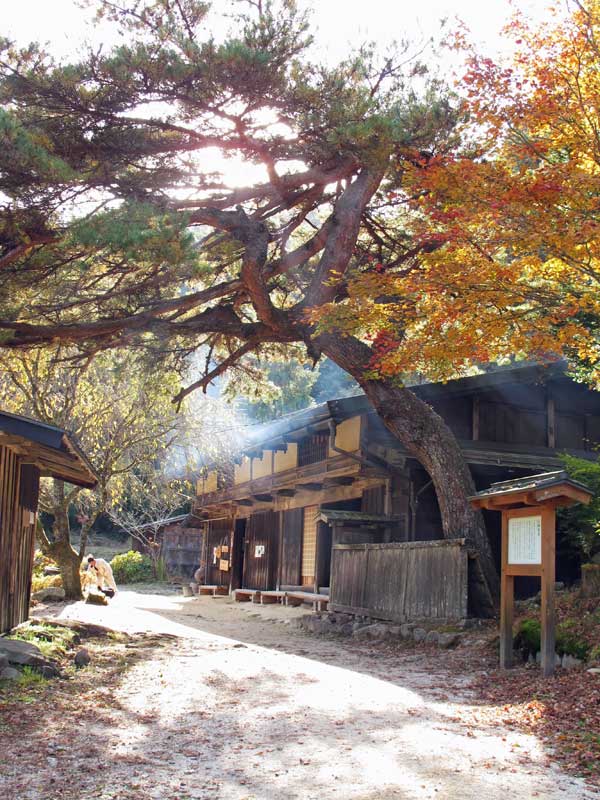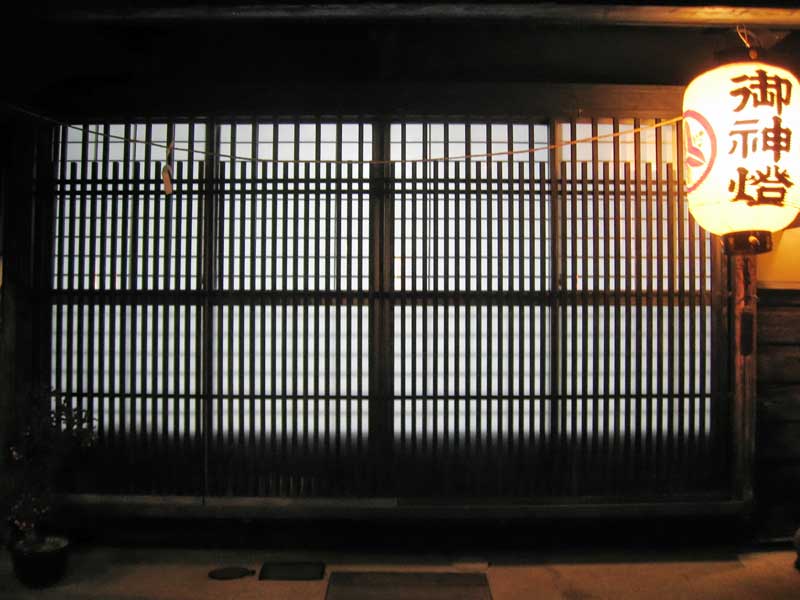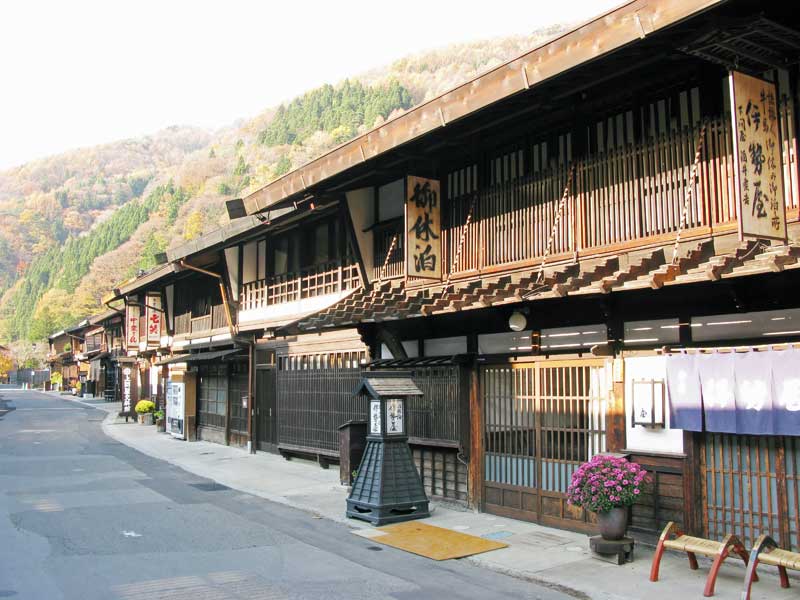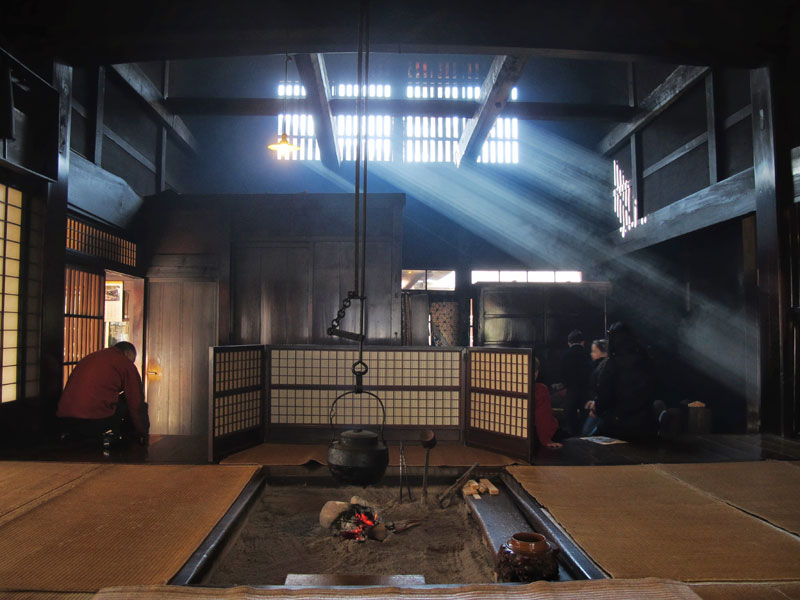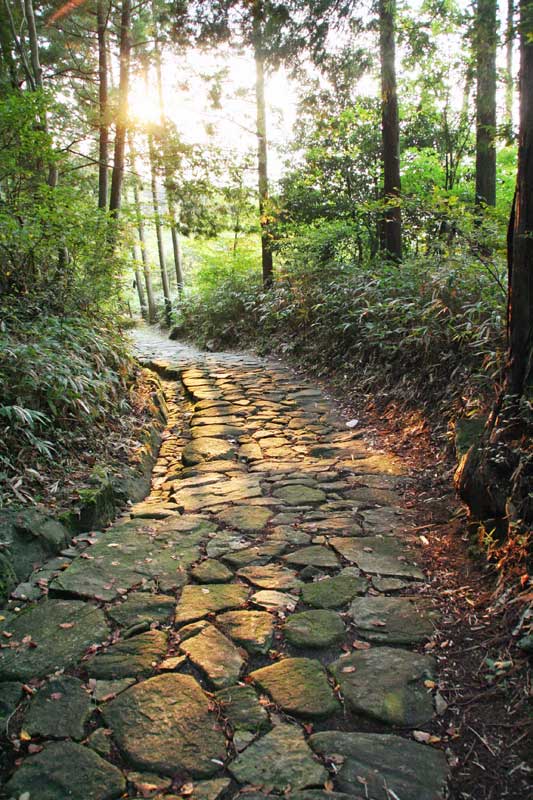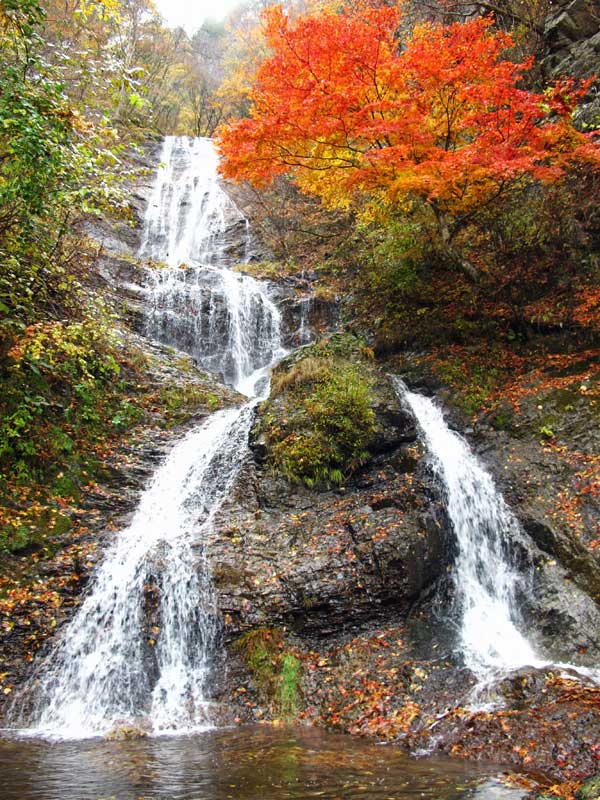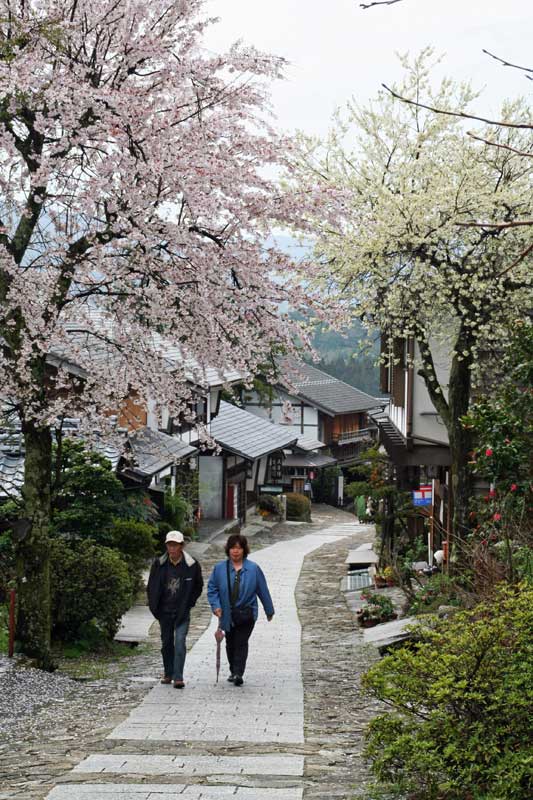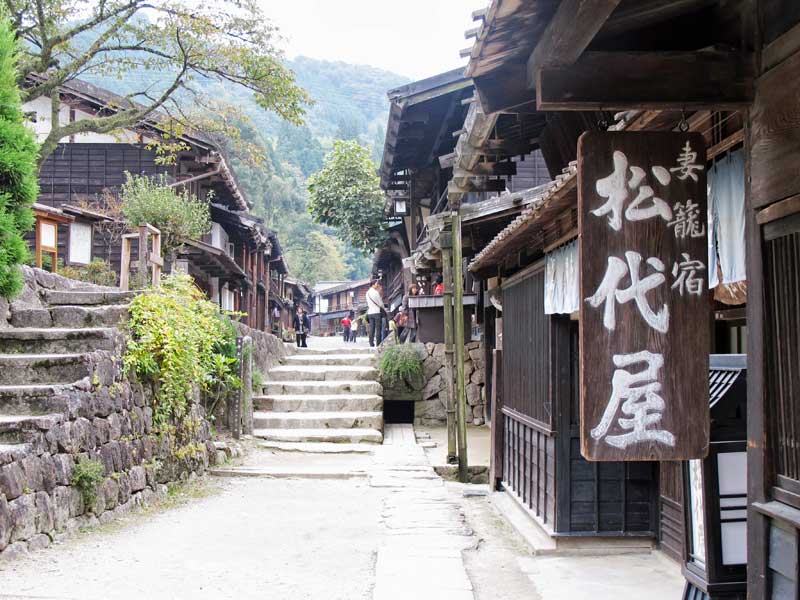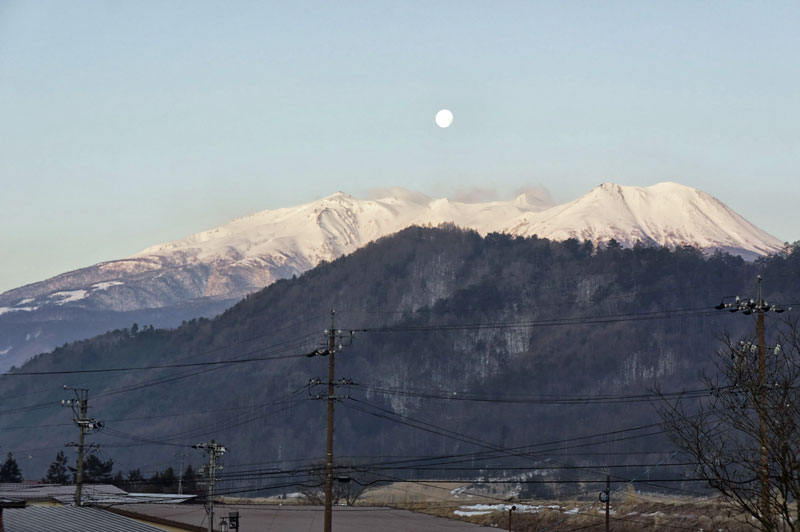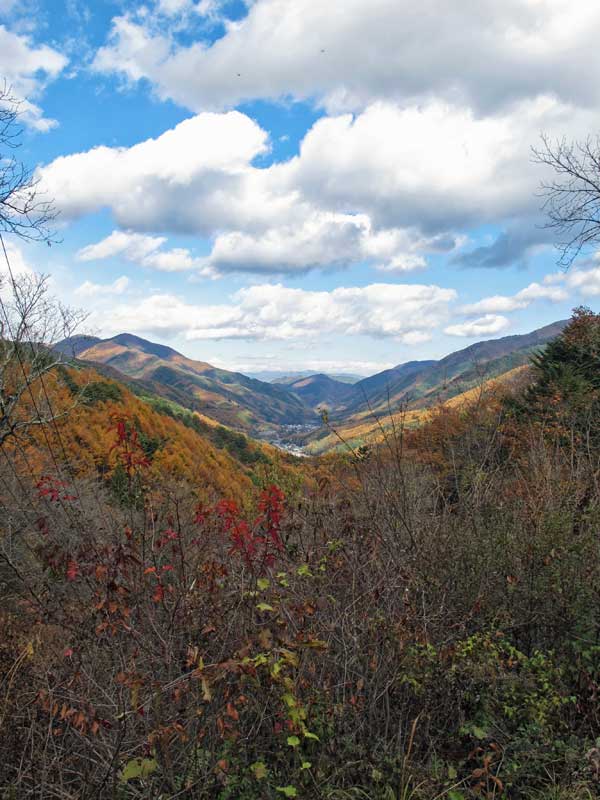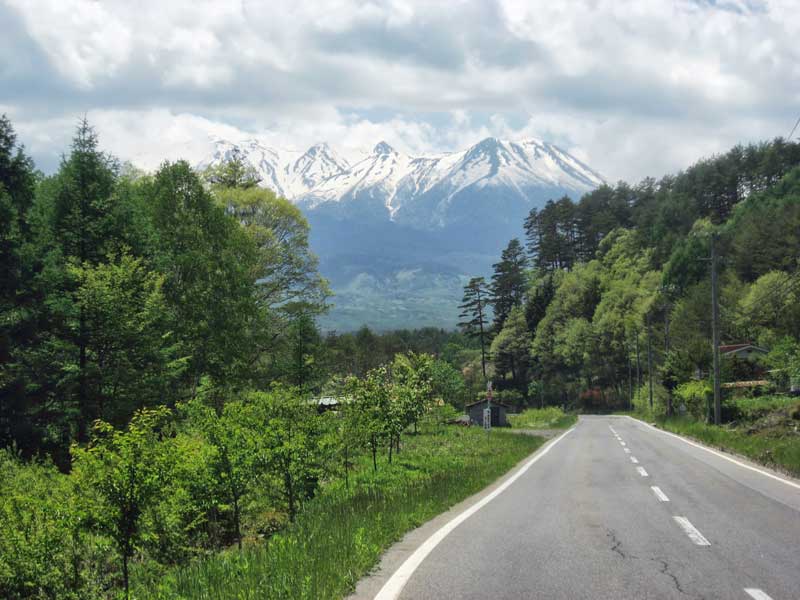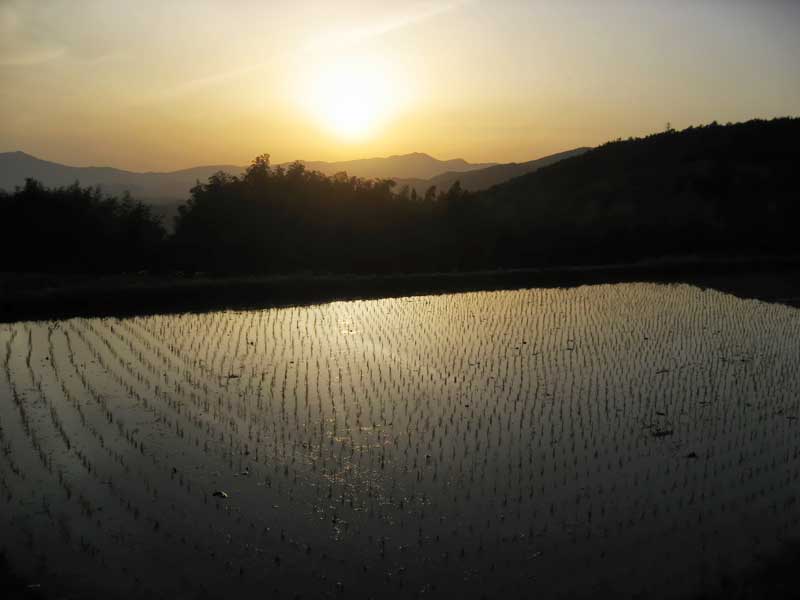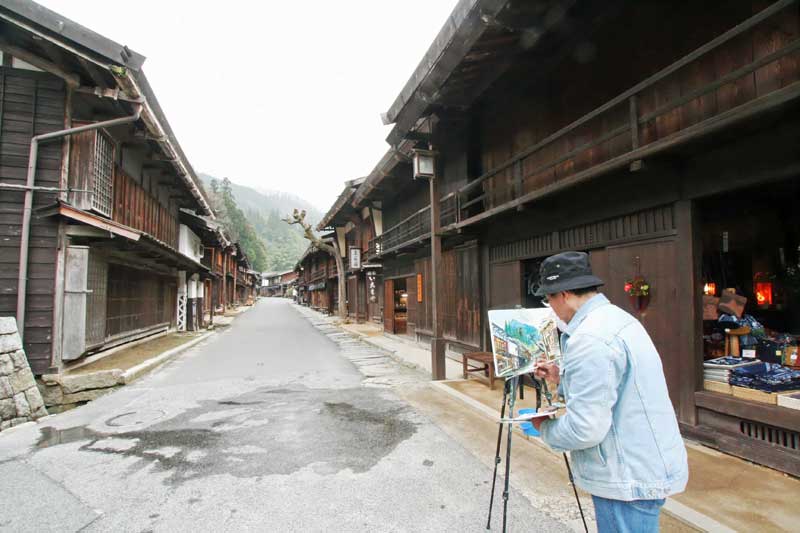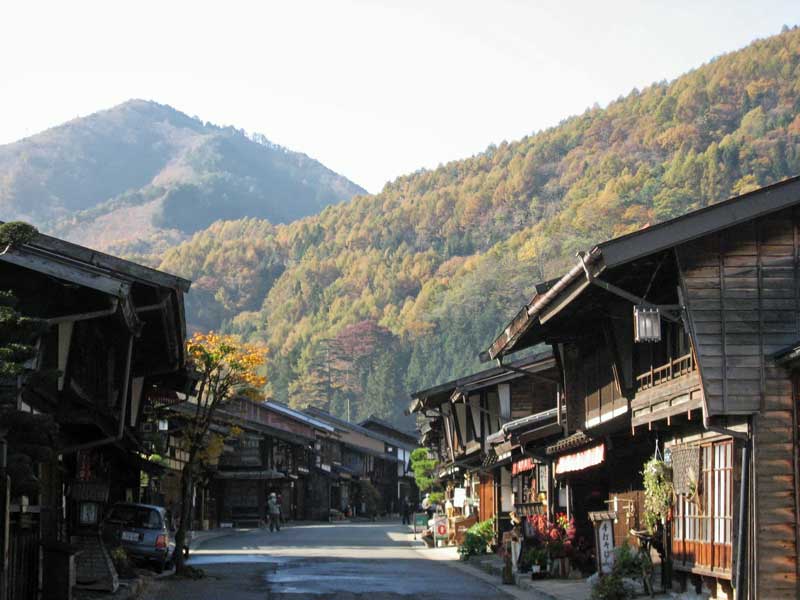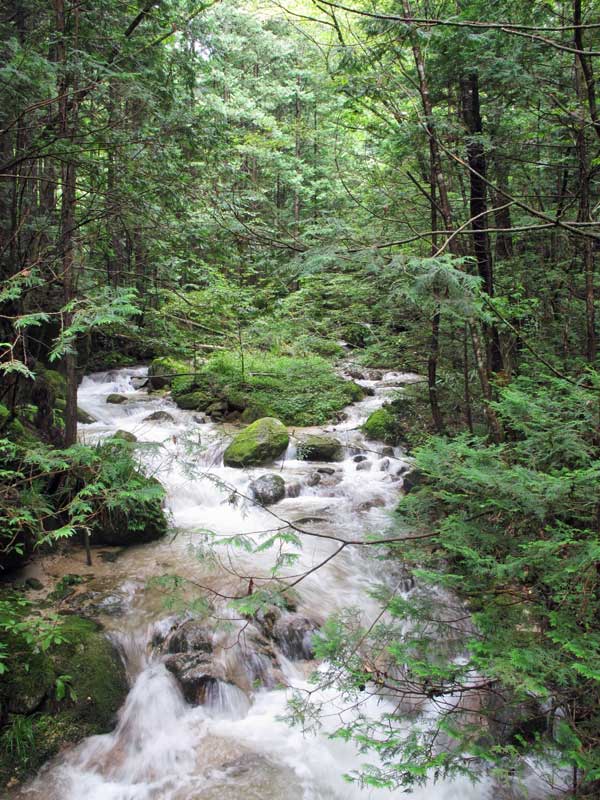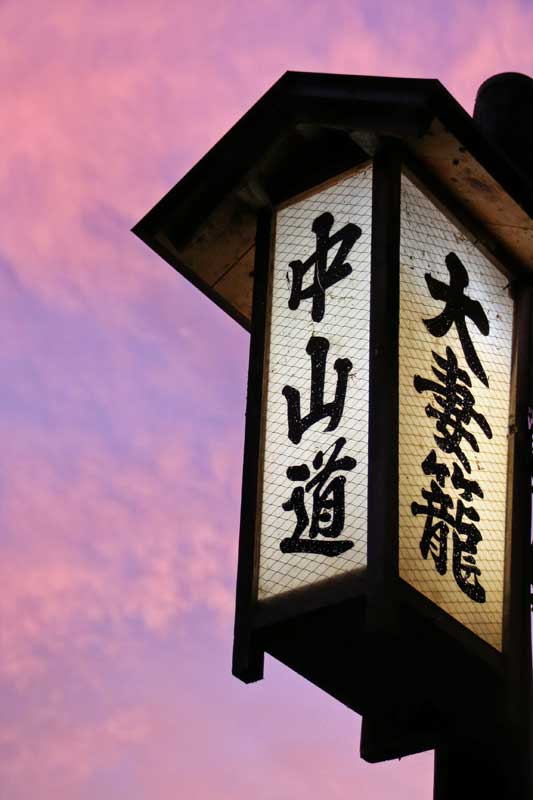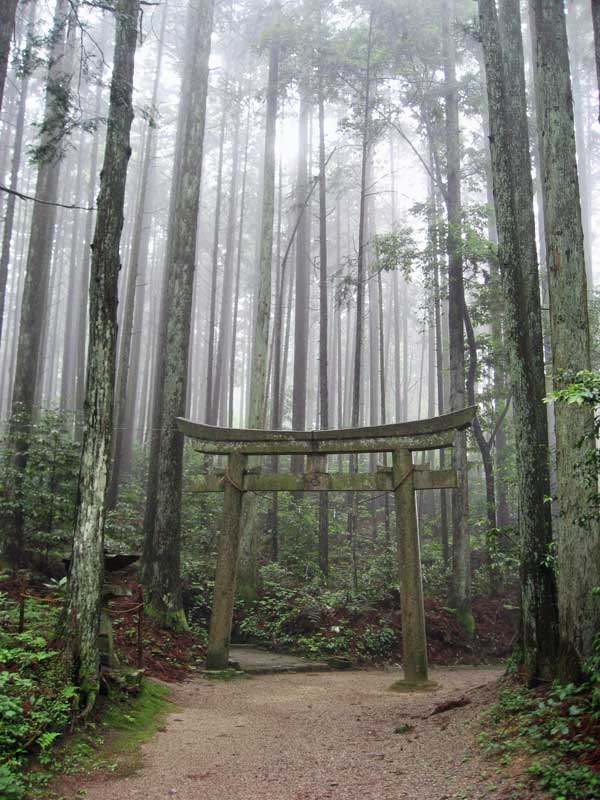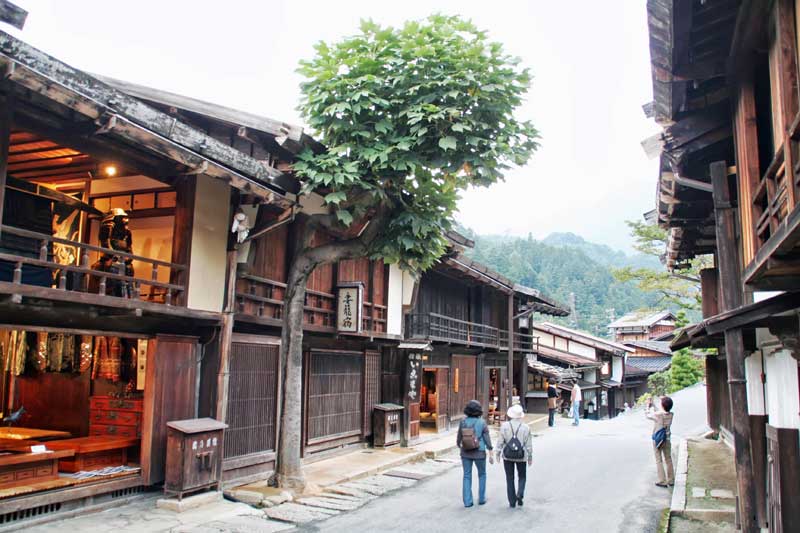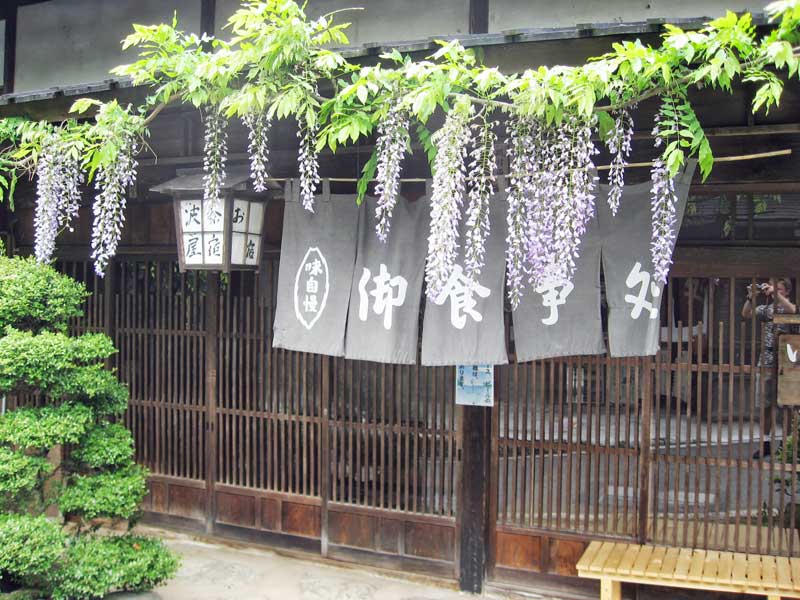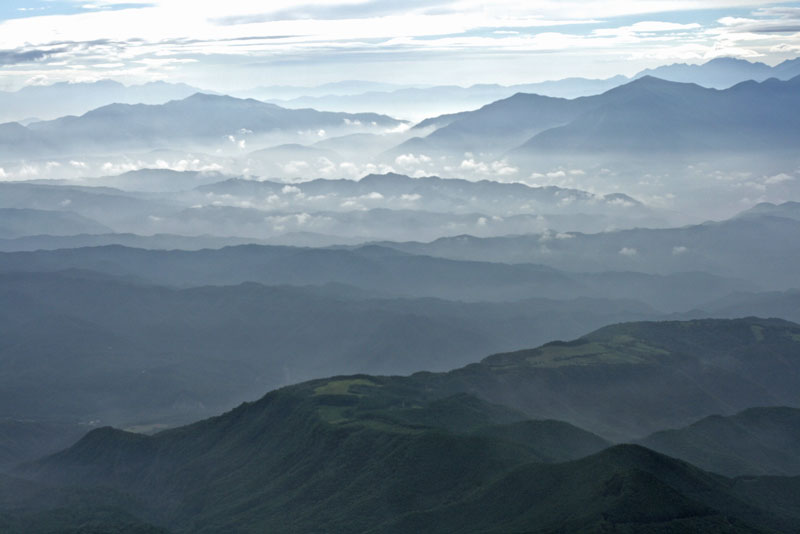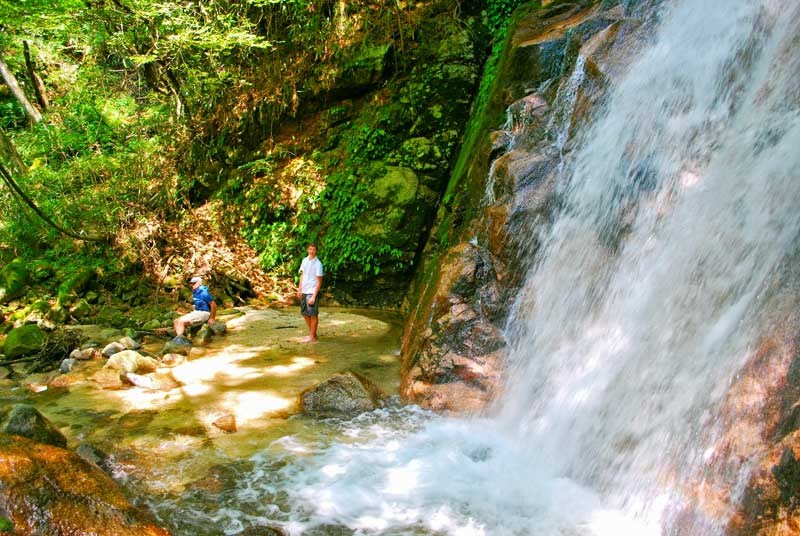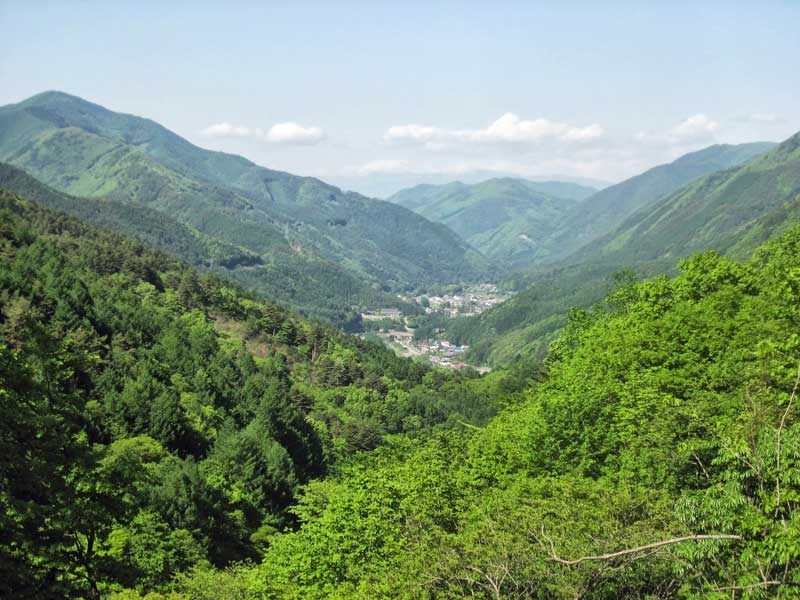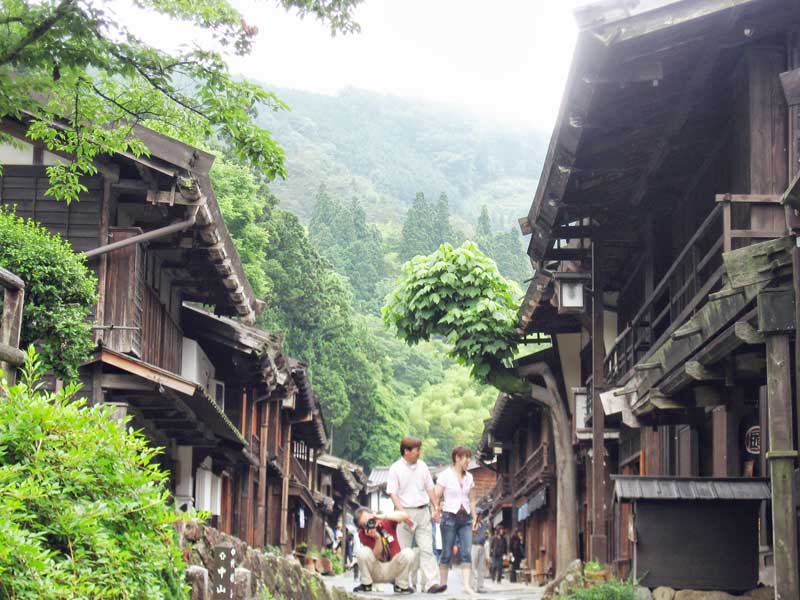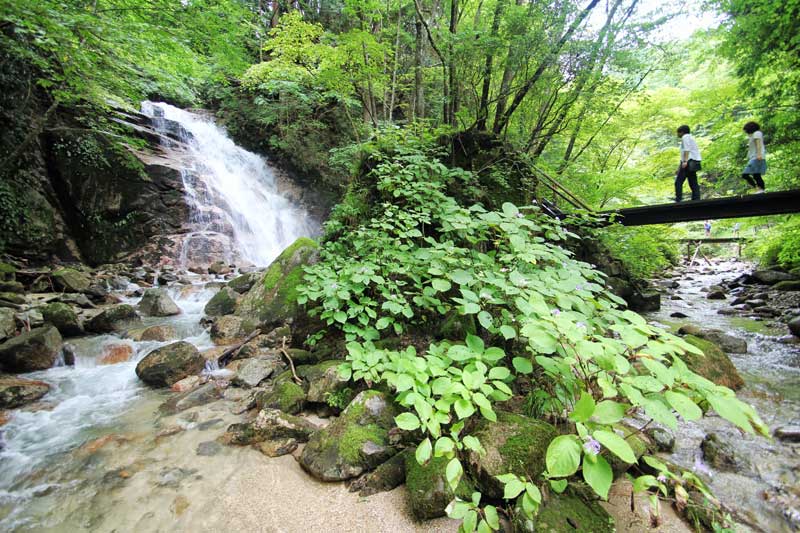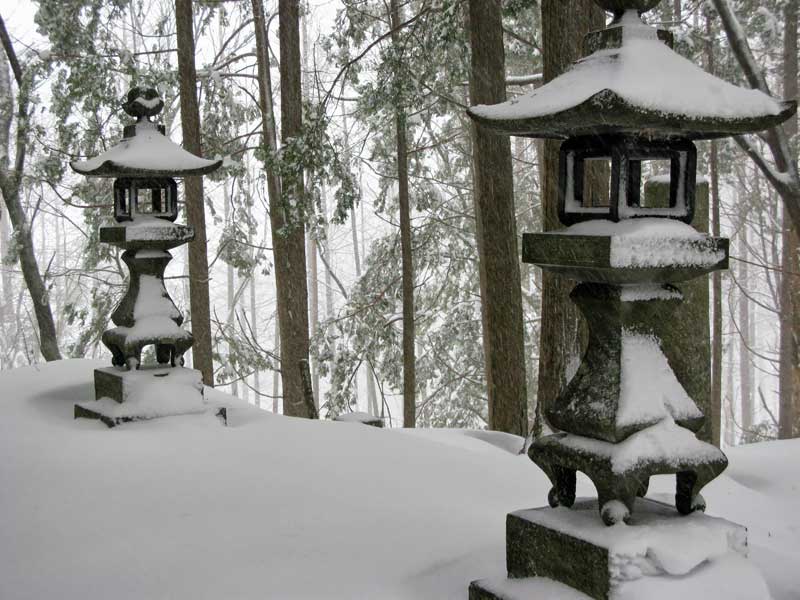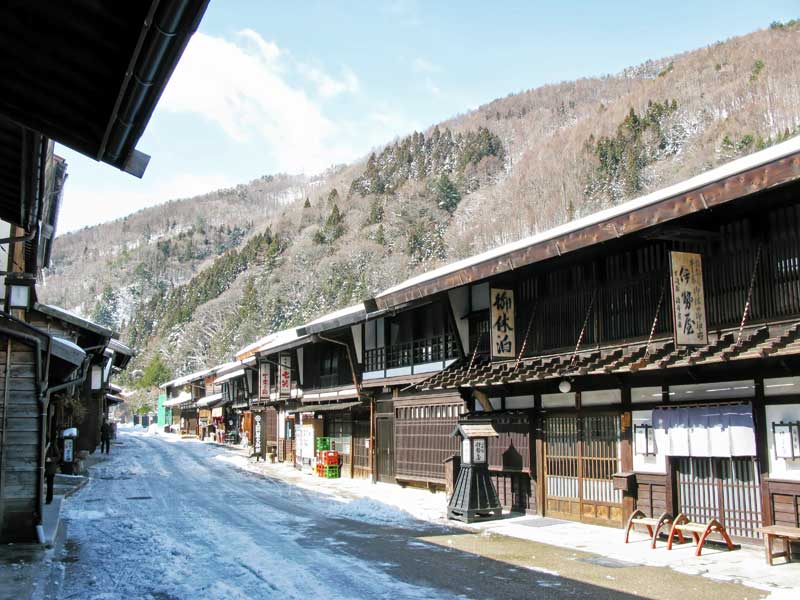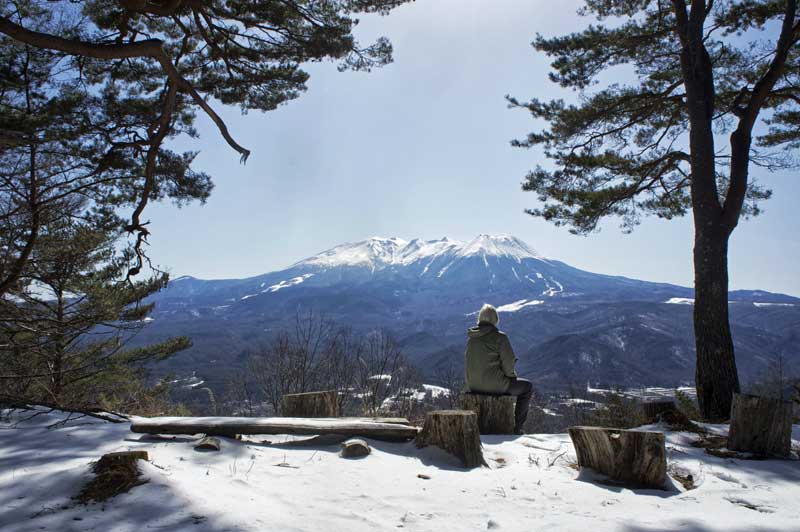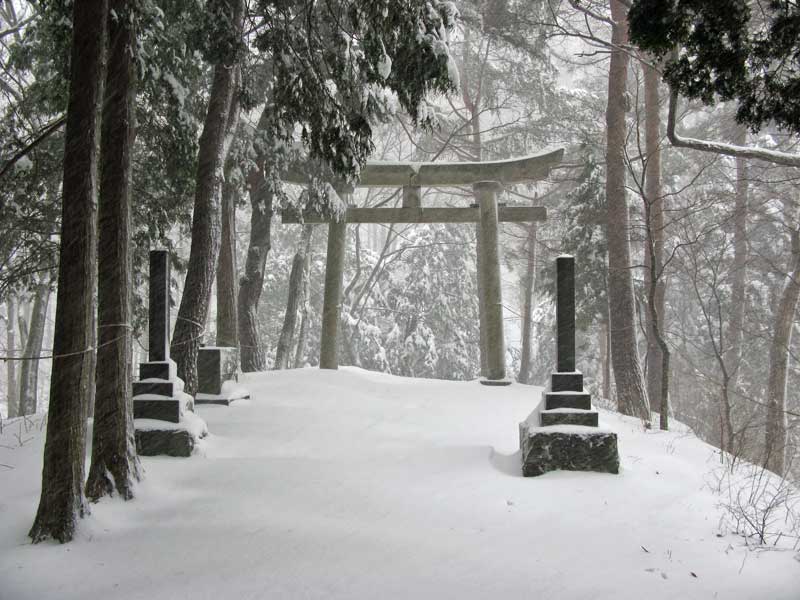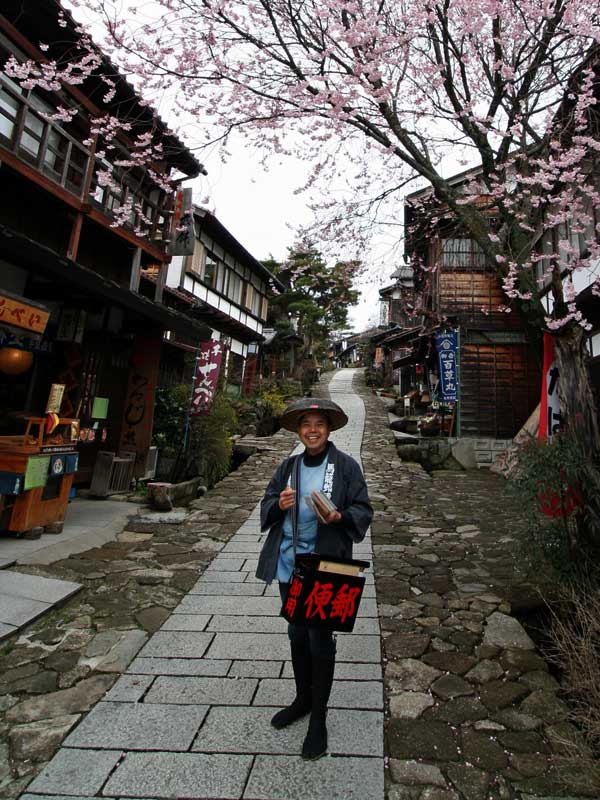A self-guided walking tour along a continuous route through central Japan.
Self-guided walking through Japan’s Kiso Valley. Follow the central section of the historic Nakasendo Way through rural, hilly countryside with expansive views; atmospheric traditional inns, local cuisine and a wealth of interest.
Year-round.
A 5-day, 4-night tour starting in Nakatsugawa and finishing in Matsumoto. Tour accommodation is in Japanese inns and hotels. Please read more on accommodation here. For more information please contact us.
Walk Japan’s Kiso Wayfarer is an unescorted walking tour centred on the Nakasendo Way where it passes through the delightful Kiso Valley. This tour utilises Walk Japan’s extensive expertise derived from pioneering guided walking tours in Japan and provides a comfortable and enjoyable experience of one of the best-preserved parts of this historic highway.
Mid-way between Kyoto and Tokyo, the 554km-long Nakasendo Way threads it way through the richly forested, and picturesque Kiso Valley in central Japan. One of the most well known and maintained sections of the old highway, which here is alternatively known as the Kiso Road. The eleven post-towns within the valley include Magome, Tsumago and Narai, which are amongst the best preserved in all Japan lending a delightful ambience from an older age.
Over the centuries travellers on this historic road have included imperial princesses and their glittering processions, devout pilgrims, itinerant poets, masterless ronin samurai mercenaries, impoverished monks and 19th Century North American and European adventurers. Passing by neatly-tended rice paddies, aside tumbling streams and through thick cedar forests, you gently make your way in their footsteps from one evocative post-town to another. Strung out along the Kiso Road, many of these post-towns are still distinctively of an older time when the samurai ruled Japan. In each we find the traditional wayside inns that provide you with friendly and atmospheric overnight accommodation at the end of a day’s walk. In an ambience reminiscent of the scenes found in the great artist Hiroshige’s woodblock prints, you relax in distinctively Japanese surroundings of shoji sliding paper screens and tatami straw mat flooring. Japanese baths, drawn in some inns from onsen thermal hot springs, are an excellent way to relax and luxuriate in at the end of the day before enjoying meals of traditional, home-made fare. The service provided by your hosts throughout the Kiso Wayfarer are a testament to centuries-old expertise in the art of hospitality.
Your trail takes you on an adventure not only through Japan’s verdant countryside but through its history, culture and society A reconstructed sekisho barrier station, a feared institution that controlled passage along the road, recalls the power of the samurai; carefully-tended, simple Shinto shrines and grand Buddhist temples signify the Japanese people’s wide spiritual embrace that reaches back to the earliest days of their nation; and, the excellent public transport system is symbolic of their economic might in the modern-age.
The Kiso Wayfarer starts at Naegi-jo, the site of a small, mountain-top castle, and concludes with a visit to Matsumoto-jo, another castle designated as a National Treasure. Only Matsumoto-jo’s towering keep, which was once at the heart of a defensive enclosure extending far beyond the surrounding grounds remaining today. Although your tour finishes here, Matsumoto is an elegant city and you may wish to spend some more time on your final day exploring. Of note, the city’s art gallery has an excellent permanent collection of work by Kusama Yayoi, probably Japan’s most famous living artist.
The Kiso Wayfarer begins in Nakatsugawa, which is easily reached by train from Nagoya, and ends in Matsumoto. The tour includes easy-to-follow, detailed instructions on how to join and prepare for the tour. The average daily walking distance is between 10 - 15km (6.2 - 9.3 miles) and options are provided to lengthen or shorten the daily itinerary to suit your energy levels. There are several passes to be negotiated along the route but these can be climbed at a comfortable pace and usually take less than 30 minutes to reach the top. Your main baggage, sent ahead by courier, is with you every night of the tour. Transfer by train at the end of the tour from Matsumoto is easily made to Tokyo, Nagoya and destinations beyond.
The Kiso Wayfarer includes easy-to-follow, detailed instructions on how to join and prepare for the tour. The average daily walking distance is between 10 - 15km (6.2 - 9.3 miles) and options may be provided to lengthen or shorten the daily itinerary to suit your energy levels. There are several passes to be negotiated along the route but these can be climbed at a comfortable pace and usually take less than 30 minutes to reach the top. Your main baggage, sent ahead by courier, is with you every night of the tour.
What is included?
A pre-tour pack. Each pack should answer most, if not all, of the questions you may have and includes such details as how to prepare for your Wayfarer Tour, how to travel from your arrival point in Japan to the accommodation on the tour's first night, an accommodation list, and travel advice. Upon receipt of a completed manifest form, your pre-tour pack will be made available for online viewing approximately two months prior to the start date of your tour. It can also be downloaded as a PDF file for offline use.
A Wayfarer Route Booklet. This is provided on arrival at your first night’s accommodation, and is an easily portable booklet. This includes detailed walking directions and logistical information, including maps, photographs and site-specific information such as lunch/cafe recommendations, museum/gallery recommendations and historical points of interest. A rain-resistant pouch and shoulder strap are also provided for ease of carrying the booklet while walking.
Click here for a sample of the Wayfarer booklet.
4 nights' accommodation, 4 breakfasts and 4 dinners.
Main baggage transfer between your accommodation.
In-country (Japan), 24-hour English-language emergency support.
What is not included?
Not included are flights, all lunches and drinks with meals, taxi transfers other than those noted above.
Please note that Wayfarer self-guided tours sometimes require transfers by public buses and/or trains that are not included in the tour price. This is either because it is not possible to reserve them in advance or to allow maximum flexibility for tour participants. Please contact us for further details.
Please see the Itinerary for this tour by clicking on the button found further up this page.
Further information about the history of the Nakasendo Way is available at our complementary website Nakasendo Way: A Journey to the Heart of Japan.

Day 1 Ena or Nakatsugawa
Your tour starts in either Ena or Nakatsugawa, neighbouring towns close to the southern end of the Kiso Road. Both are easily reached by train via Nagoya. A short taxi from the train station brings you to the quiet surroundings of your accommodation for the evening. The Kiso River, which is nearby, is a constant companion, widening and ebbing throughout your travels north up the Kiso Valley. After checking in, relax into your surroundings including a leisurely soak in your accommodation’s baths before enjoying a sumptuous multi-course feast.
Accommodation: Traditional Japanese inn.
Meals: Dinner provided.
Total walking: N/A.
Total elevation gain: N/A.
Day 2 Nakatsugawa - Ochiai - Magome
After breakfast at your inn, choose from one of two optional activities for the morning. The first option is a visit to nearby Naegi-jo, the fascinating remains of an ancient mountain-top castle that provides a fitting start to the historical narrative of your tour. Though little is left of the castle’s original buildings, the hewn rocks evoke a great sense of its past strategic importance and the life that warriors of old led here. At the castle’s highest point, panoramic views over the surrounding countryside open up to the Kiso River and Japan’s Southern Alps. A 5km walk through forests and along quiet roads leads back to central Nakatsugawa.
The second and more relaxed option is an approximate 2km stroll exploring Nakatsugawa’s old post-town quarter, the streetscape of which retains an air of its historic past. Here you may like to enjoy a tipple at the town’s sake brewery, which is housed in a lovely period building. Nearby, visit the top-class waki-honjin inn and small attached museum, to appreciate how nobles and lords once sojourned here on their travels to pay homage to the Shogun in Edo, now known as Tokyo.
Before setting off on your afternoon walk, enjoy lunch in one of the town’s many restaurants, which includes an establishment specialising in grilled eel, the local delicacy. Your journey for the rest of the day covers 9km and takes you from the lowlands over a series of low passes before a final 40-minute climb up to the high, rural countryside of the Kiso Valley itself. En route you pass through the quiet post-town of Ochiai, which still retains its honjin top-class inn - an even higher class inn than Nakatsugawa’s waki-honjin. Now a very rare feature anywhere in Japan, it has remarkably survived into the modern age although, unfortunately, is no longer in business. A climb over ishidatami stone paving, signals that you are not far from your inn, which is located adjacent to the old road. Nearby is a local shrine deeply redolent of Shinto’s simplistic yet elegant origins. Magome is a stone’s throw away and you may like to make a quick visit before passing through tomorrow morning. Your hostess welcomes you warmly and provides another array of local, seasonal fare for dinner.
Accommodation: Guesthouse.
Meals: Breakfast & dinner provided.
Total walking: 9 - 14 km (5.6 - 8.7 miles).
Total elevation gain: 365 - 443m (1197 - 1453ft).
Day 3 Magome – Tsumago - Nagiso - Kiso-Fukushima
Rice paddies and farmhouses line your route into Magome, the first of three famed Kiso post-towns you will visit. Set unusually on the side of a steep slope, Magome mixes a homely charm with some tremendous views to Ena-san, a towering mountain. It was the birthplace of Shimazaki Toson, Japan’s first modern novelist and author of Before the Dawn. His monumental novel eloquently describes Japan's transition from feudal to modern society in his home town. There are many cafés to relax in and shops to browse through here before continuing on up to the Magome Pass.
From the top of the pass, your route now gently meanders downhill on a forest path through cedar forests and past clear running mountain streams and waterfalls. A teahouse in a forest clearing still exists much as it would in days of the Edo Period and provides an alluring environment to rest in and take refreshment. A little further on after passing through a quiet, atmospheric hamlet you arrive at Tsumago, perhaps the most picturesque of any surviving post-town in Japan. Almost totally overlooked in the modern age, its townscape has remained much as it looked in the heyday of the ancient highway. Relax here awhile before continuing your walk through gentle countryside to Nagiso. Here, if time allows, cross the intriguing footbridge spanning the Kiso River. Momosuke Fukuzawa, one of Japan’s early industrial tycoons, had it constructed at the turn of the 20th Century and enjoyed life here with his partner, Sadayakko Kawakami. Once a geisha, at the turn of the 20th Century Sadayakko was lauded in the USA, Europe and Russia, where she performed for Presidents, Tzars and Princes and appeared on the front of Harper’s Bazaar magazine.
From Nagiso, a local train takes you further up the Kiso Valley to Kiso-Fukushima, the principal, albeit compact town of the region. Close to the station is your accommodation, a traditional inn, which houses therapeutic onsen hot spring baths and serves a sumptuous evening meal.
Accommodation: Traditional Japanese inn with onsen hot spring baths.
Meals: Breakfast & dinner provided.
Total walking: 15km (9.3 miles).
Total elevation gain: 373m (1224ft).
Day 4 Kiso-Fukushima - Narai - Matsumoto
Hemmed in by steep mountainsides and at the confluence of two rivers in a deep valley, Kiso-Fukushima served two purposes; as a post-town and also as the site of a sekisho barrier station, which straddled the way and regulated passage. Directly controlled by the Shogun, the sekisho was a place to be feared on pain of death by any who lacked the appropriate documentation or were concealing contraband. It has been reconstructed and provides another fascinating insight of your tour into the Edo Period and life on the old highway.
After exploring this compact town, ride another train to the start of today’s walk at Yabuhara post-town. From here a 9km forested walk leads you up and over the Torii Pass to Narai, another scenic post-town. Narai is known for its period architecture, boxwood combs and lacquerware. Enjoy a relaxing exploration of Narai before transferring by train to Matsumoto. Your hotel for the night is a charming and comfortable establishment in the centre of the city.
Accommodation: Western-style hotel.
Meals: Breakfast & dinner provided.
Total walking: 9 - 12km (5.6 - 7.5 miles)
Total elevation gain: 373 - 491m (1224 - 1610ft).
Day 5 Matsumoto
After breakfast in your accommodation, visit Matsumoto-jo, the city’s emblematic castle. It is an imposing black edifice that rewards any who climb the steep stairs housed within to the top, a lookout where tremendous views stretch out across Matsumoto to Japan’s Central Alps.The tour finishes here, but there is plenty more to explore if you wish to do so including the Matsumoto Art Gallery, which has an excellent permanent collection of work by Kusama Yayoi, probably Japan’s most famous living artist. Easy onward transfer is made by express trains to Tokyo, Nagoya, and destinations beyond.
Accommodation: N/A.
Meals: Breakfast provided.
Total walking: 2km (1.2 miles)
Total elevation gain: N/A.
This itinerary is subject to change.
The airport closest to the tour's start at Nakatsugawa is Nagoya’s Central Japan Airport. The journey is also easily made from Osaka’s Kansai International Airport and Tokyo’s Narita and Haneda International Airports.
-----
FROM NAGOYA’S CENTRAL JAPAN INTERNATIONAL AIRPORT (NGO), The Meitetsu Limited Express journeys to Meitetsu Nagoya Station in approximately 30 minutes. From here, walk to the adjacent JR Nagoya station and switch to the Chuo local JR line to reach Nakatsugawa in just over one hour.
-----
FROM OSAKA’S KANSAI INTERNATIONAL AIRPORT (KIX), Japan Rail's (JR) Haruka Express to Shin-Osaka Station takes approximately 50 minutes. From Shin-Osaka, transfer to the Tokaido shinkansen bullet train to Nagoya. From Nagoya, switch to the Chuo local JR line to reach Nakatsugawa in just over one hour, meaning roughly a 3.5 hour ride from KIX.
-----
FROM TOKYO’S HANEDA AIRPORT (HND), Keikyu trains depart for Shinagawa Station. Transfer here to the shinkansen bullet train for Nagoya, where a further transfer is required to the JR Chuo Line for Nakatsugawa. The total journey is approximately 3 hours 30 minutes.
-----
FROM TOKYO’S NARITA AIRPORT (NRT), JR Narita Express trains depart for Tokyo Station. Transfer here to the shinkansen bullet train for Nagoya, where a further transfer is required to the JR Chuo Line for Nakatsugawa. The total journey is approximately 4 hours 10 minutes.
The pre-tour pack includes detailed instructions, including a map, for travel to the accommodation at the start of the tour.
Tour participants are advised not to book themselves out on a flight on Day 5 of the tour, as it can take 2 ~ 3 hours to reach a major international airport from Matsumoto.



